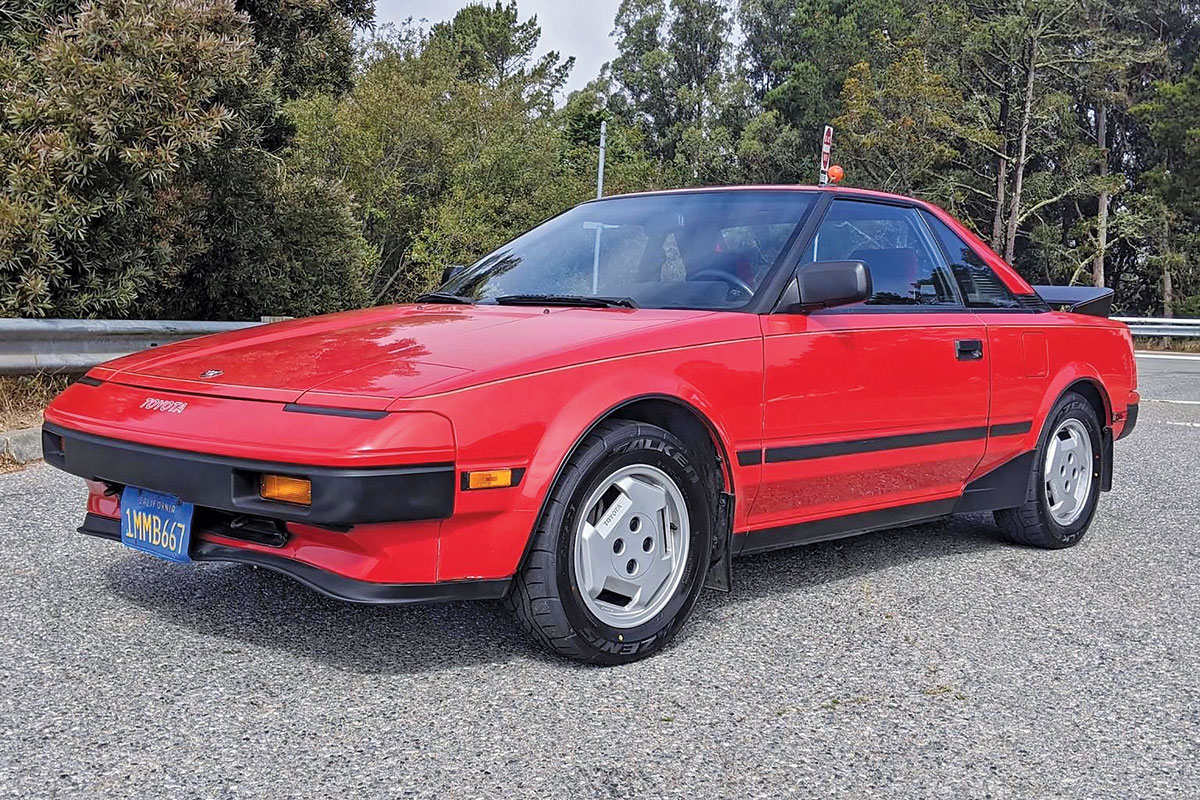
There’s something about a mid-engine car that’s just downright cool. Forget about the polar moment of inertia and the rest of the engineering-ese. When this motorsports-derived configuration appeared in the DeTomaso Vallelunga, Ferrari Dino and Lamborghini Miura in the late 1960s, it became forever associated with exotic cars. Even America’s sports car finally abandoned seven decades of front-engine tradition when the Corvette C8 joined the mid-engine exotics club.
Of course, there have been attempts at marketing a mid-engine car for the masses. Porsche’s 914 arrived for 1970, and though cheap for a Porsche, it was by no means inexpensive. It would take the 1974 arrival of the Fiat X1/9 before the mid-engine mantra could be embraced by middle-class enthusiasts. A handsome car, the X1/9 was crippled by stringent emissions regulations. A decade later, General Motors took a crack at the everyman “middy” with the 1984 Pontiac Fiero, although its potential was undercut by the company’s bean counters.
The best affordable mid-engine sports car would come a year later with Toyota’s MR2. The name was something of an acronym: “M” for mid-engine, “R” for rear-drive, and “2” for the number of seats.
Mr. Two Meets America
By 1985, Toyota was gaining huge ground in the U.S. with its frugal Corolla. Sold in various body styles and both front- and rear-drive variants, the cars shared a MacPherson strut-style suspension and a variety of 4-cylinder engines. At the top of the powertrain hierarchy was Toyota’s 4A-GE 1.6-liter, which used performance tricks derived from exotica: a 16-valve DOHC cylinder head, T-VIS variable-intake system, and electronic fuel injection. It was this 112-horsepower, 7,500-rpm-redline engine that Toyota stuffed amidships in its new sports car.
The MR2 was thoroughly modern, with four-wheel disc brakes, strut-style suspension, and a 5-speed manual gearbox (a 4-speed automatic was an option). Most of this engineering was cribbed from the humble Corolla. The MR2’s styling wasn’t what you’d call pretty, but it was purposeful, with lots of creased lines, a rectangular vent molded into the passenger’s side, and in upper trim levels, a rear spoiler and side skirts, 14-inch alloy wheels, big-bolstered bucket seats, and a distinctive clear visor that extended from the roof’s trailing edge. Best of all was the price: $10,999.
Motor Trend named the MR2 its 1985 Import Car of the Year. The newly launched, enthusiast-targeted Automobile placed the car on the cover of its inaugural April 1986 issue in a comparison with none other than Ferrari’s 308 GTBi QV. (The Italian Stallion won, but the Japanese underdog earned plenty of praise.) The MR2 didn’t do anything unique compared with its affordable mid-engine predecessors, but it did nearly everything better. (By then, the 914 was long gone. The X1/9 was still on sale in 1985, albeit cast off to Bertone. After strong initial sales, the Fiero was quickly flaming out.)
The MR2 was fine-tuned by none other than American racing and engineering legend Dan Gurney. The result was a sports car that boasted Japanese reliability, ergonomics and practicality, while offering superior driving dynamics and performance at the top of its class. With a spacious and relatively quiet interior and offering about 30 miles per gallon on the highway, it made a great daily driver. The MR2 even had enough cargo capacity (divided between front and rear trunks) for a weekend’s worth of luggage.
From great to super
The 1987 model year brought a refresh, with some cosmetic updates, larger front brakes, minor suspension revisions and a stronger engine block. This new block formed the basis for a Supercharged model introduced in 1988, easily distinguished from the standard MR2 by its decals, unique wheel design and raised engine-lid vents that gave room for an air-to-water intercooler. Toyota packaged more creature comforts on this upmarket model — including standard glass T-top roof panels — which raised curb weight 150 pounds to 2,500.
The supercharger bumped output to 145 hp and gave nearly as much torque. This meant 0–60 mph times dropped to 6.5 seconds. A well-driven MR2 Supercharged could legitimately hang with far more expensive and powerful sports cars on sinuous backroads.
The price also went up, with the Supercharged MR2 stickering for about half again as much as the naturally aspirated version. Sales of the new model made up less than 10% of 1988–89 MR2 totals. At the end of 1989, the first-generation MR2 was discontinued to make way for a larger, heavier, but more-powerful second generation.
Out of the shadows
Like many Japanese sports cars of the 1980s, the MR2 languished in the marketplace for most of the 1990s and 2000s. Forgotten and unloved, most MR2s that you’d find in Craigslist ads were worn-out, high-mileage cars that had dropped off their recommended maintenance schedules long ago. That certainly described the 175k-mile 1988 MR2 I sold circa 2008, after it had delivered me more than five years of fun and 60,000 cheap, reliable miles, despite my occasional neglect. I still tell anyone who will listen that it was one of the best cars I’ve owned.
Today, you’ll find some of those lesser examples around, but you’ll also find excellent, low-mileage “survivors” coming to the market for the first time in decades. Those are the ones you want.
With the rise of the broader collector-car market, the once-lowly MR2 has seen an uptick in values. Abused or high-mileage project cars are still sub-$5,000 propositions, but well-kept, lower-miles naturally aspirated MR2s start at roughly $10,000 and head into the teens. Double your budget to the $20,000-plus price point for a Supercharged car that will attract serious attention at the next RADwood show. ♦